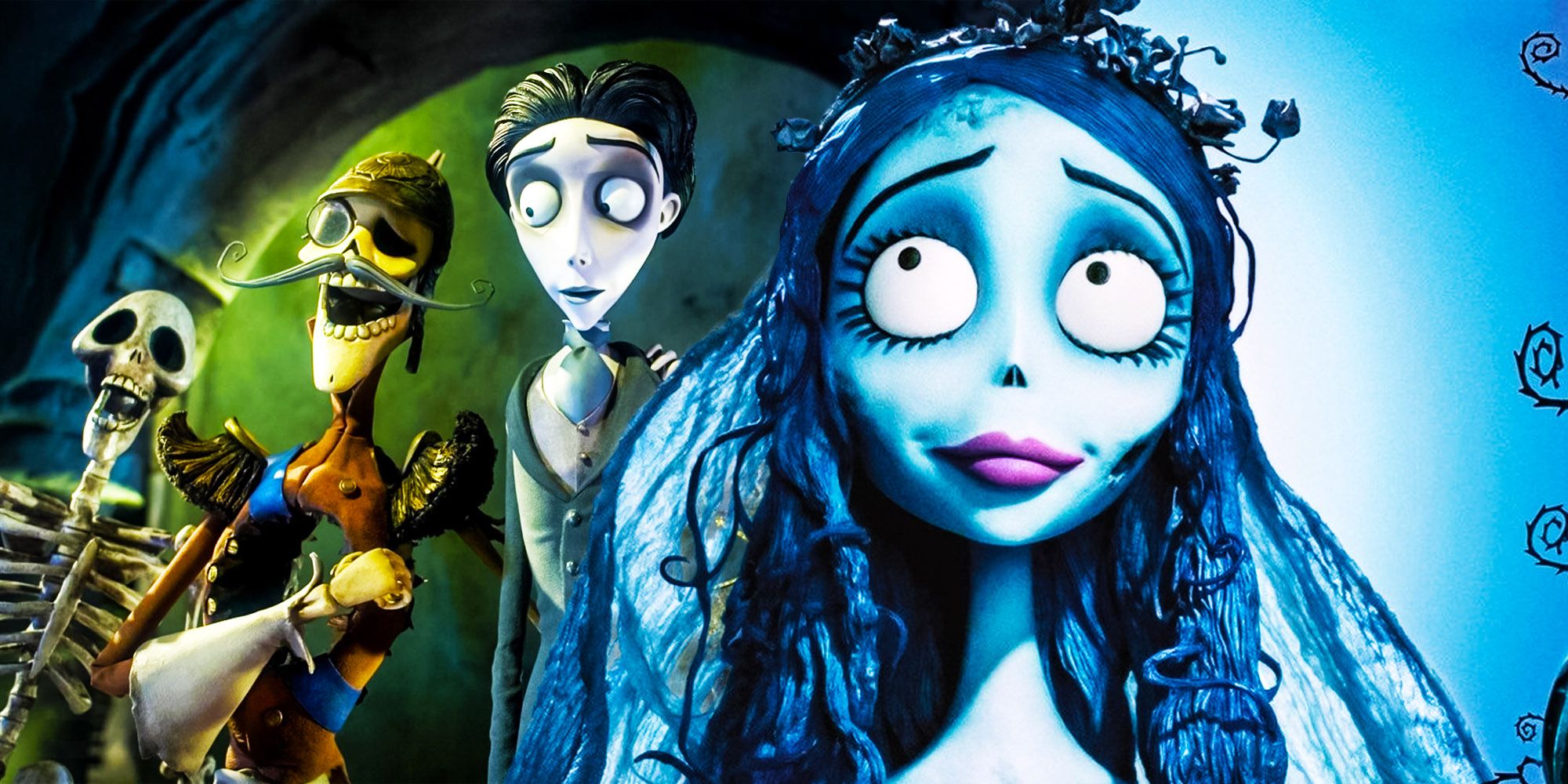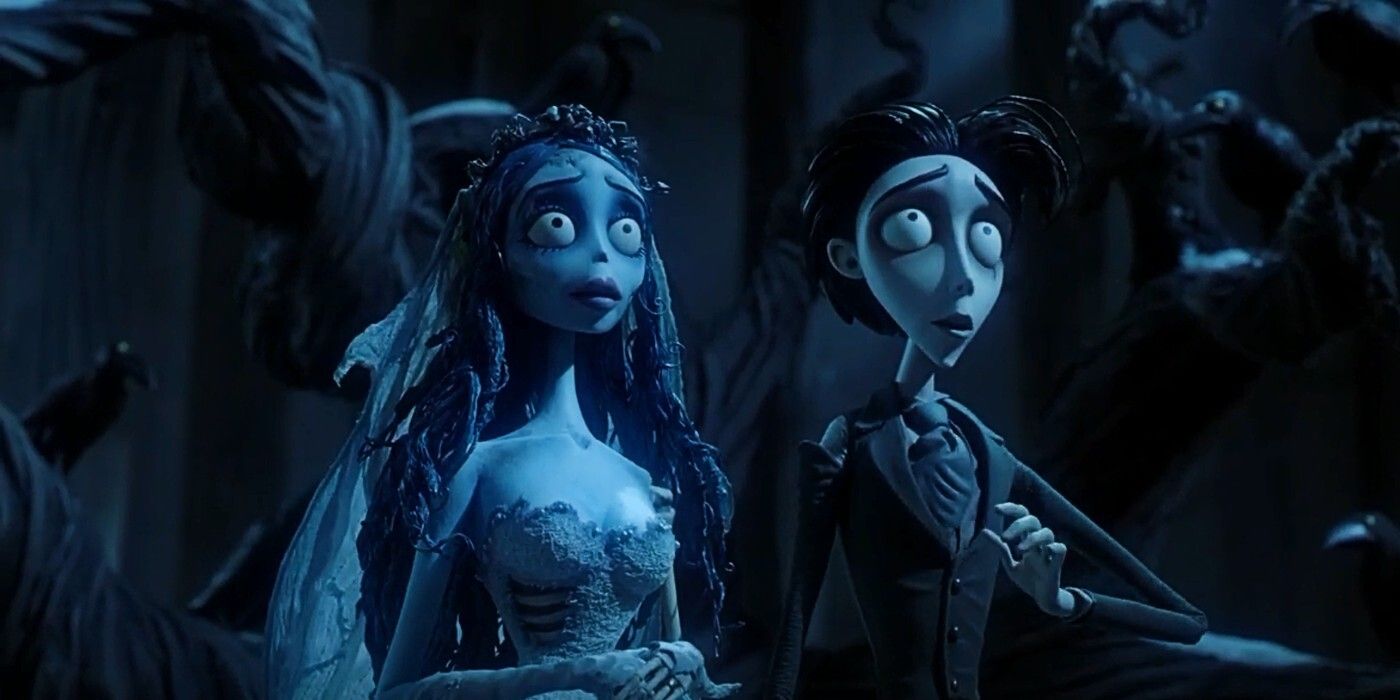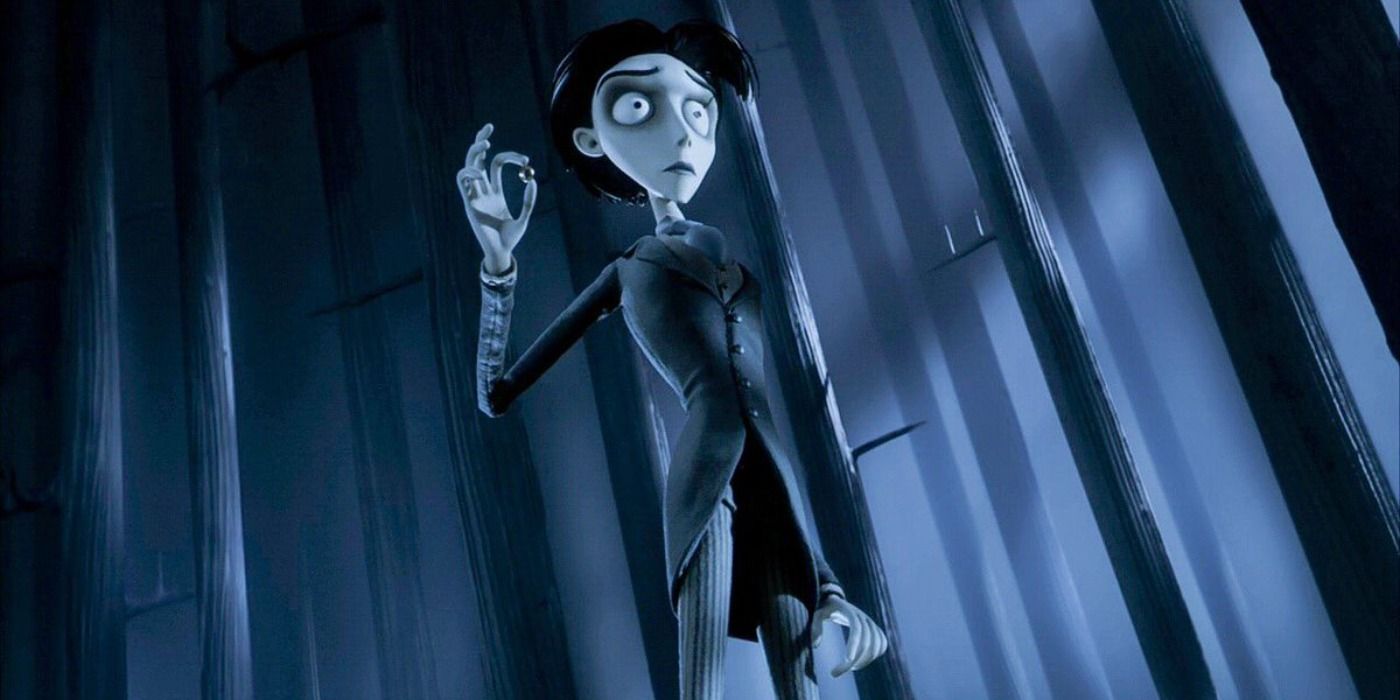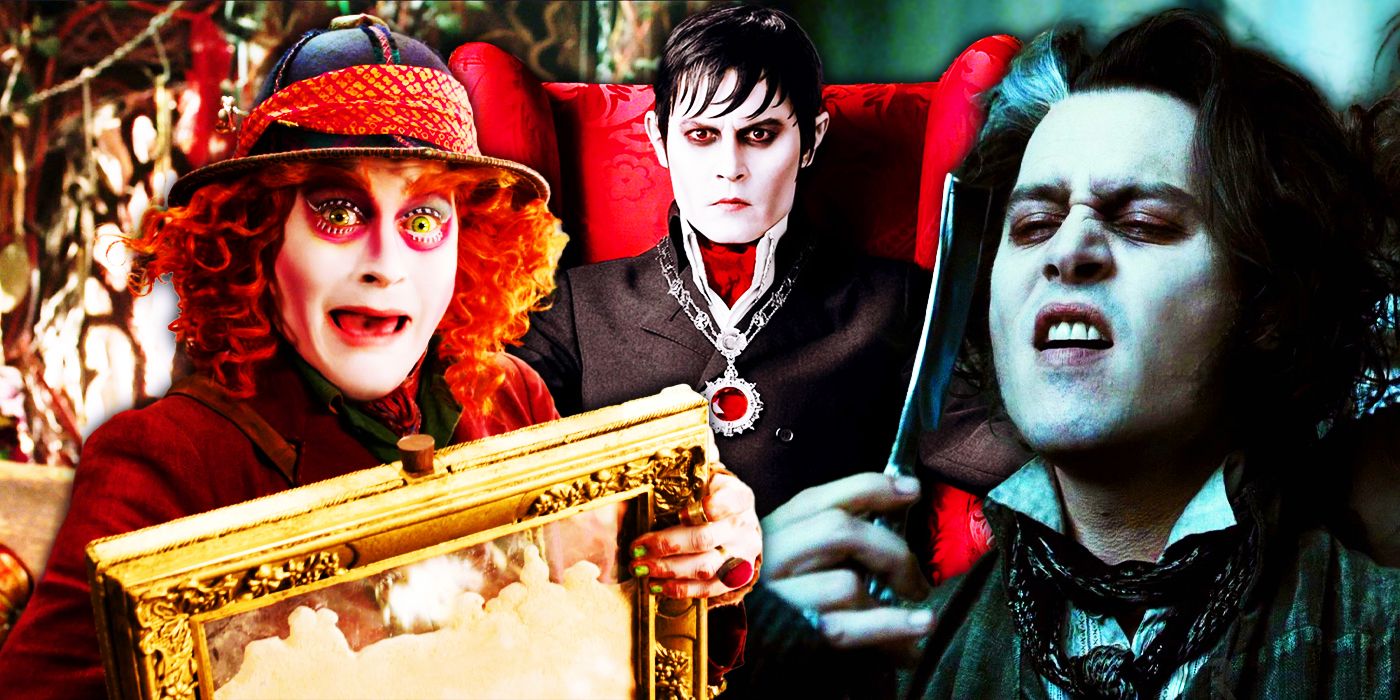Summary
- The original Corpse Bride story was inspired by a Jewish folktale called "The Finger," which tells the story of a man accidentally marrying the undead ghost of a murdered bride.
- The original folktale had a gloomier ending, with the undead bride dissolving into bones, but some versions ended on a happier note honoring her life. It is suggested that she was the victim of a pogrom, a common occurrence in turn-of-the-century Russia.
- Tim Burton adapted the story by setting it in Victorian England and removing the religious and ethnic Jewish characters to make it a more universal "fairy tale." Many of Burton's movies draw inspiration from old stories and give them a gothic twist.
Content Warning: This article discusses antisemitism.
The Corpse Bride original story is inspired by an Ashkenazi ghost story with tragic connections to real-world events. The Tim Burton 2005 dark fantasy film is based on a story of a living person accidentally marrying the specter of a murdered bride-to-be. However, Corpse Bride’s bittersweet narrative added significant expansion to its plot and changes to its setting and characters. Both Tim Burton's Corpse Bride and the Jewish folklore that inspired it, unfortunately, have origins in turn-of-the-century Russian pogroms in which weddings ended in tragedy.
Corpse Bride, whose setting is Victorian England, tells the macabre story of Victor Van Dort, who inadvertently becomes betrothed to Emily, an undead victim of a ruthless serial killer. With Victor caught between his sympathies for Emily and his genuine love for his living fiancé Victoria Everglot, matters are further complicated by Emily’s killer resurfacing and plotting to marry, murder, and rob Victoria next. The film’s bittersweet ending sees the plot of Emily’s killer thwarted and Emily allowing Victor and Victoria to remain together rather than deny them the life she’d had taken from her.
The Story Corpse Bride Is Inspired By
The Corpse Bride original story is loosely based on the Jewish folktale known as "The Finger." The story saw some men walking in the woods when they saw what they thought was a root sticking out of the ground. When they closed in, they saw it was a finger and one of them joked, by asking who would put a ring on that finger. The eldest of the boys, who was soon to be married, joked that he would and when he did, the finger began to twitch and the body of a dead woman rose out and claimed her husband.
The original version was, fascinatingly, a far gloomier tale, with the undead bride lacking a name or tragic backstory, and whose accidental marriage is rendered null and void at the end of the tale, leading her to collapse into nothing but bones, though some versions of the story end on a happier note, with the groom’s living wife promising her that she and the life she never had will be honored by the living. While The Finger does not specify why the body of a would-be bride is found in the middle of the woods, its setting suggests that she was the victim of a pogrom, a tragically common occurrence in the Russian Empire at the turn of the century.
How The Finger Became Corpse Bride
While pogroms ravaged Jewish communities throughout their diasporic history in Russia, the early 20th Century saw a particularly gruesome wave of attacks, with would-be brides often being murdered and tossed into shallow graves, still in their wedding gowns. The Tim Burton movie vaguely retains this detail by having Emily be the victim of a serial murderer, but the film’s new setting and reimagined characters are bereft of The Finger’s implicit meaning. The message of The Finger’s happier alternative ending may be to remember the lives cut short by these horrific pogroms, and Corpse Bride’s new setting, unfortunately, makes this message impossible, even if the characters are beloved and likable.
While the Corpse Bride original story was intrigued by The Finger, he opted to remove the folk tale’s religious and ethnic Jewish characters by setting Corpse Bride in Victorian England, with characters who are white and Christian. Burton wished to make Corpse Bride a modern "fairy tale," so rather than featuring a Levantine population in Eastern Europe, he altered it to conform to the more typical Western European and Christian sensibilities. Corpse Bride is as heartwarming as it is tragic, but the Corpse Bride Jewish folklore and history that inspired it make it even more heartbreaking.
Are Other Tim Burton Movies Inspired By Stories?
Tim Burton is one of the most creative filmmakers of his era, but if there is one thing he has made a habit of, it is taking old stories and putting his own gothic spin on them. While the Corpse Bride Jewish folklore is one example, there are many others. Burton's debut movie Pee-Wee's Big Adventure was actually based on the classic Italian drama Bicycle Thieves but as a parody of that masterful movie. With Batman, Burton took the comic book character and transformed Gotham City into a gothic landscape that has lasted the test of time.
Sleepy Hollow was Burton's spin on the classic Washington Irving short story about the headless horsemen while Alice in Wonderland was a retelling of the iconic Lewis Carroll novel, Alice's Adventures in Wonderland. Burton was also not above taking old movies and TV shows and adding his spin onto them. He did so with a remake of Planet of the Apes and Dark Shadows, both familiar tales that brought classics back to the big screen. For Charlie and the Chocolate Factory, Burton went more with the original Roald Dahl story than the Gene Wilder movie, but it was still a comparable story.
Tim Burton made a musical in 2007 with Sweeney Todd: The Demon Barber of Fleet Street, which was based on the stage musical by Stephen Sondheim and Hugh Wheeler, which itself was based on the play by Christopher Bond. While Frankenweenie was influenced by the Mary Shelley novel Frankenstein, Miss Peregrine's Home for Peculiar Children was based on a more recent novel by Ransom Riggs, published in 2011. While the Corpse Bride Jewish folklore connection was not clear from that movie, most of the time Tim Burton movies wear their story influences on their sleeves.




